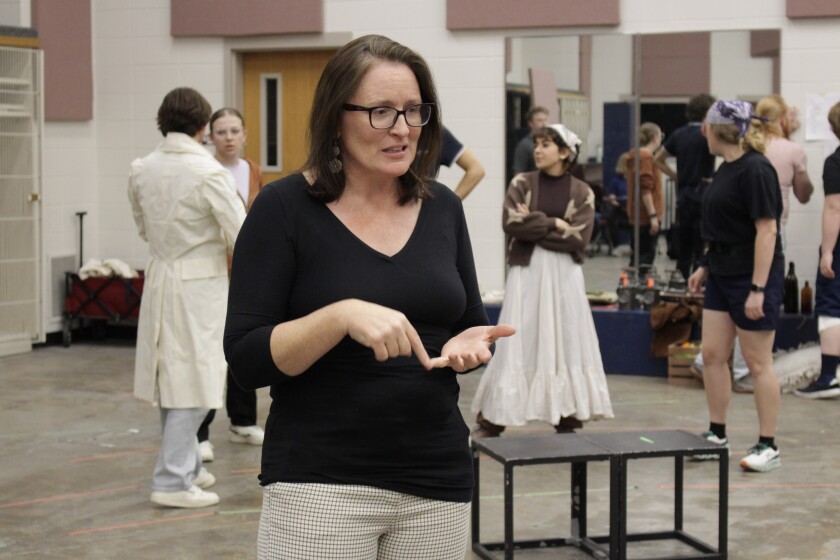Collaboration and Physical Theatre in Great Expectations
Our adaptation of Great Expectations is a memory play, in which all of the action is drawn from the recollections of our narrator and main character, Pip. The way we remember things is less about realistic precision and more about the impact of what we experience and the way we reflect upon it. Our production is bringing to life Pip’s memories of the past, rather than the past itself. The ensemble represents people he has known, but also the atmosphere and setting of his thoughts.

This is adapting the form of the novel by Charles Dickens, which is told from Pip’s point of view. “I love the respect for Dickens' narrative style [in this show],” says Thomas Judd, who plays Magwitch. “It feels like how Dickens writes, in that it's a whirlwind and it's an experience more than just a sequence of events, it’s not just a plot driven with dialogue. It feels like you're in this world and that world is not naturalistic – it's a world of experience.”
Director Alexandra Mackenzie Johns has been inspired by the highly physical theatre in the works of the Frantic Assembly company and director Sally Cookson, which feature lifts, stunts, and the partial evocation of the set by the full ensemble.
Many of our scenes were devised through a process of brainstorming and experimentation by the cast. As Pip arrives in London, we depict both the event and the overwhelming assault on his senses through a whirl of physical activity. “The very first day of rehearsal, we spent two hours on my opening monologue; the rest of the cast was just sitting there and I thought ‘Oh no, I hope this isn’t going to be what the entire process is like!’” says Jared Hendricks, who plays Pip, about the process. “But it’s so different. I might talk the most, but I do not do the most. It’s so collaborative and everyone has a part to play and we couldn't do any of it, telling the story in this way, without every single person.”

Some of our actors reflected on their experience in a show that uses so much movement.
Mason Lance, who plays Herbert Pocket, emphasizes the choreography in this production. “There is all this dancelike movement from scene to scene, character to character,” he said. “I have been able to use my dance skills in a very different way than I have before. I love being able to use movement to show the flow and power of Pip’s memories.”
Imagery is another focus of this production. “It's not only the words telling the story, it's all of the images that we create, working together with our bodies,” says Nathan Holley, who plays Joe and Jaggers. “We get to consider the artistic value of the image being seen by the audience. It’s a different side of acting that I haven't really worked with before, finding that balance between realism and then this kind of unnatural world and being able to still find the real emotions in so much abstract storytelling.”

“This show is so collaborative,” added Garrett Gunnell, who portrays Bentley Drummle. “It really does feel like no one actor is more important than another because we are all a part of bringing Pip's memories to life. We are all a part of the main character.”

At the end of rehearsal, Alexandra Mackenzie Johns, the director, speaks to the cast and crew. “You've all offered directorial insight to me; at this stage I can’t even pick apart whose idea is what,” she tells them. “Everyone at some point has thrown in an idea about blocking or shaping that has risen to the top as we have played together. I've thoroughly enjoyed that and it seems to parallel how Pip’s memories are all just bubbling up to the surface.”
The cast and crew have great expectations for Great Expectations. It takes every member of the team to create the show, especially in a piece as physical and collaborative as this one. From the directors and designers to each of the actors, every person is able to shine within the tapestry of the show. Great Expectations runs October 17-November 1 in the BYU Studio Theatre.


